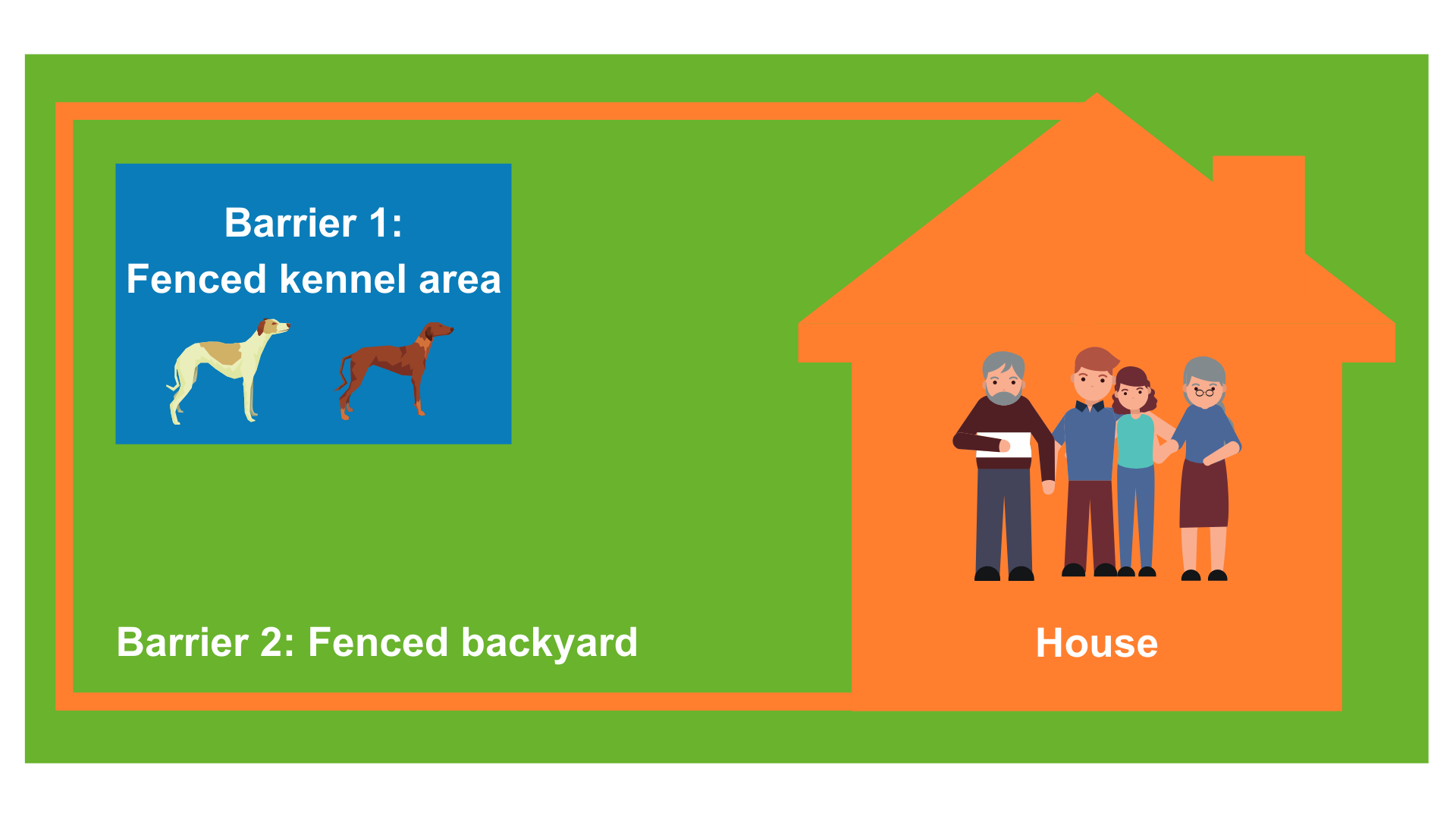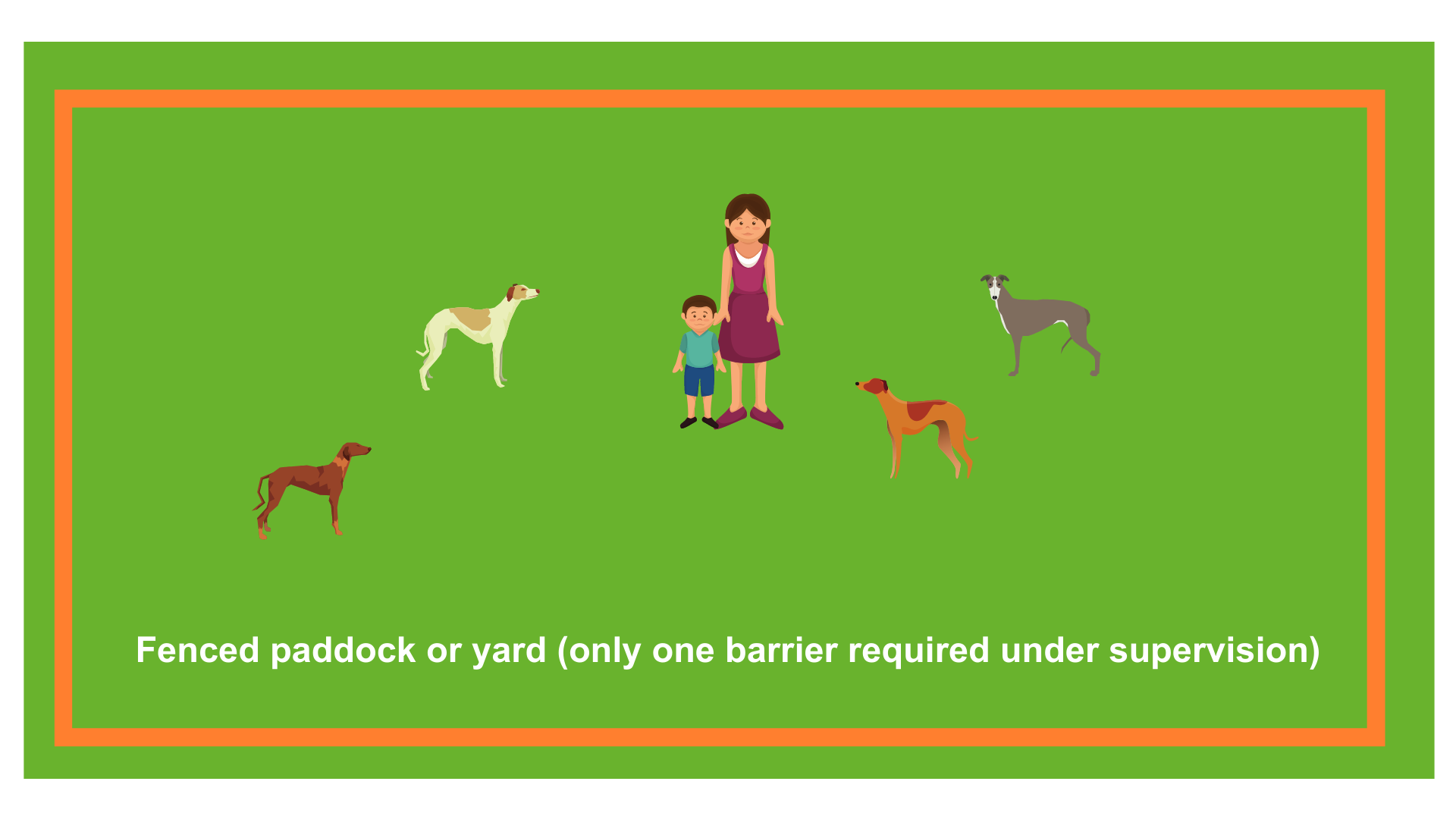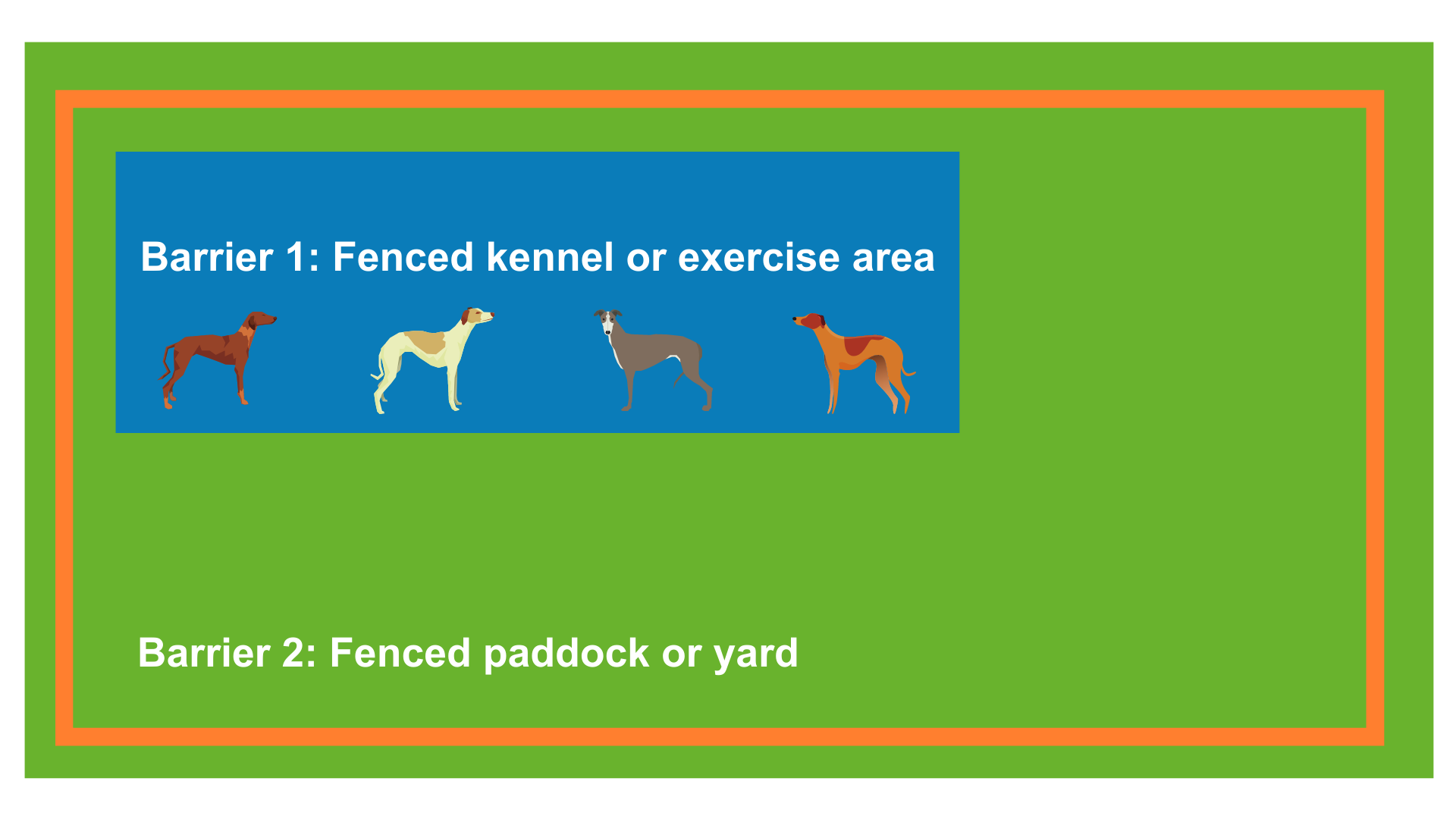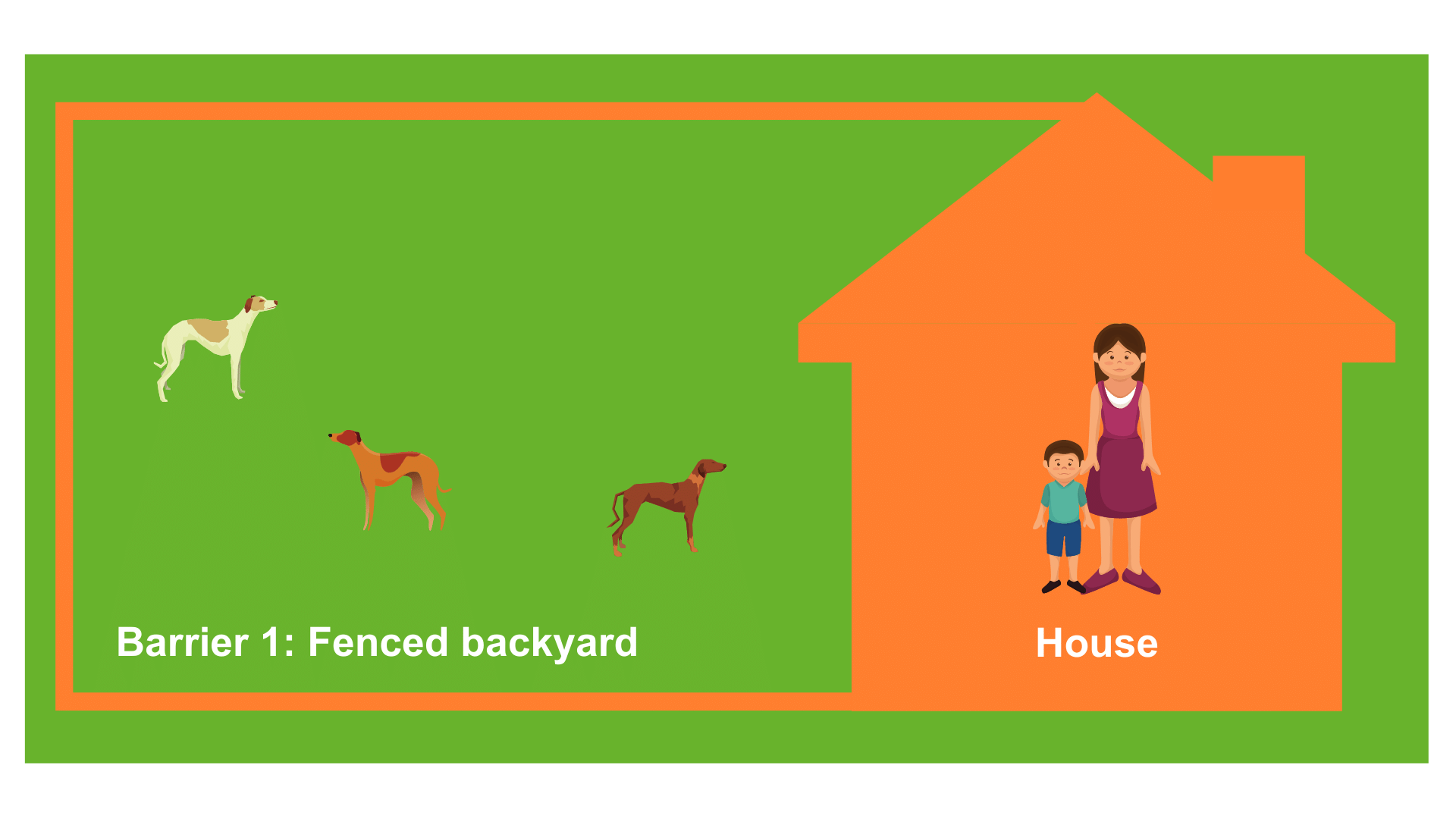Kennel Sizes and Fencing
Kennelling requirements
The Code specifies new standards for kennel size but also provides time for participants to meet the new standards. Existing kennels should be 3 square metres in size and will be deemed compliant until 31 December 2030. After this date, all kennels must be at least 3.5 square metres.
Any new kennels built between now and 31 December 2030 must meet the requirements below.
Kennel Sizes
The NSW Greyhound Welfare Code of Practice specifies that unless a veterinarian directs otherwise, a kennel for a single adult greyhound must be:
- a least 1.2 metres wide
- at least 1.8 metres high
- at least 3.5 square metres in size
Standard 5.9 - Greyhound Housing Areas Space Requirements

Significant welfare or safety risks
Where a greyhound has sustained - or it at risk of sustaining - an injury, illness or behavioural issue that is related to the size of its kennel, the Greyhound Welfare & Integrity Commission may take the following action:
- a direction to remove the greyhound from its greyhound housing area to prevent it suffering illness or injury, or
- the issue of an animal welfare direction relating to greyhound housing areas under section 24N of the Prevention of Cruelty to Animals Act 1979, or
- the seizure of the greyhound.
Where the Commission identifies a significant welfare or safety risk, participants will have at least two opportunities to remedy the issues before they are required to upgrade their kennels to meet the new standards of 3.5 square metres, revoking the grace period of 31 December 2030.
Veterinary Directions
Unless a veterinarian directs otherwise, greyhound housing areas must meet minimum space requirements.
A participant does not need to meet minimum space requirements if they are following the directions of a veterinarian. The purpose of this is to allow for flexibility in the care of greyhounds.
For a variation to the minimum space requirements, a greyhound must be under the care of a veterinarian and the veterinarian must provide a direction that relates to the size of the greyhound’s kennel.
Fencing & Barriers to Escape
The NSW Greyhound Welfare Code of Practice requires that greyhounds must be securely confined to prevent their escape from the property, with two barriers between a greyhound and escape from the property, unless the dog is under supervision.
This means that a greyhound kept within a kennel, for example, will be considered secure as long as there is another fence around the kennel – this may be around the kennel area or around the perimeter of the property. The kennel forms one barrier, and the fence around the property forms a second barrier.
However, if a greyhound is outside its kennel and within a yard where there is only one barrier to stop it escaping from the property, it must be supervised. This does not mean that someone must be watching the greyhounds at all times, but there must be someone present at the property who knows where the greyhounds are and can intervene if issues occur.




Fencing Height
Kennels, where greyhounds spend the most time, must be at least 1.8 metres (six feet) high – high enough to keep greyhounds contained and to allow humans to access them easily.
A 1.8 metre fence around the perimeter of a property is ideal. As this may not be practical for some participants, 1.5 metres is the recommended height for fencing external greyhound yards including outdoor yards, toileting areas and exercise yards.
If you have greyhounds that are fence jumpers, consider higher fencing or supervise these dogs when they are out of their kennel.
Materials
Fencing can be made of different materials, and the most important thing is that it is safe (for both greyhounds and humans), secure, durable, and well maintained.
Fences can be solid (e.g. Colorbond fencing), or made of galvanised wire, or weld mesh.
If you are using wire mesh, the gauge should not exceed 75mm x 50mm in size. For enclosures in which puppies are kept, 50mm x 50mm is recommended.
In areas where snakes are common, consider using snake-proof mesh to protect the greyhounds. Greyhounds can jump, and they can also dig! Consequently, it is advisable to sink fencing by 200 – 300 mm under the ground.